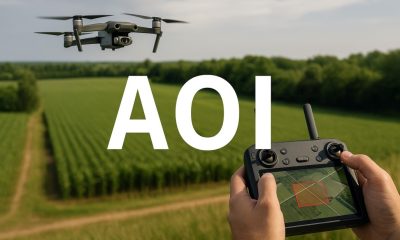UK Drone Regulations
Drone Operations Categories in the UK – What are they ?
Table Of Contents

Categories of Drone Operations
The U.K. Civil Aviation Authority (CAA) categorizes drone operations into three main categories: Open, Specific, and Certified. Each category reflects the level of risk associated with the operation and imposes different requirements on the operator. Understanding these categories is crucial for compliance and for selecting the appropriate operational procedures for your drone activities.
Open Category
Definition
The Open Category is designed for low-risk drone operations. These operations typically involve drones that do not exceed a specific weight and are conducted within certain limitations that minimize risks to people, property, and other airspace users.
Regulations
- Drone Weight: Drones used in the Open Category must weigh less than 25 kg.
- Operational Limits: Operators must keep the drone within visual line of sight (VLOS) and must not fly higher than 120 meters (400 feet) above ground level.
- Distance from People: Operators must maintain a safe distance from uninvolved people. There are subcategories (A1, A2, A3) within the Open Category that define specific distance requirements based on the weight of the drone and the nature of the operation.
- No-Fly Zones: Drones must not be flown in restricted areas, such as near airports or over crowds, without special permissions.
- Pilot Competency: Operators must pass the CAA’s online test to obtain a Flyer ID and must register as an operator to receive an Operator ID.
Subcategories
- A1 Subcategory: Allows for flights over people (but not over large gatherings) with drones that are lighter and have safety features.
- A2 Subcategory: Allows flights close to people with specific drones, provided the operator holds a Certificate of Competency (A2 CofC).
- A3 Subcategory: Requires flights far away from people and built-up areas.
Specific Category
Definition
The Specific Category is intended for operations that present a higher level of risk than those in the Open Category. This category applies to drone activities that do not meet the criteria of the Open Category and therefore require additional risk assessments and approvals.
Regulations
- Operational Authorization: Operators must obtain an Operational Authorization from the CAA, which outlines the conditions and limitations for the specific drone operation.
- Risk Assessment: A detailed risk assessment must be conducted and submitted as part of the application for Operational Authorization. This assessment identifies potential hazards and mitigation strategies.
- Pilot Competency: Operators may need to hold additional certifications, such as the General VLOS Certificate (GVC), depending on the complexity of the operation.
- Operations: The Specific Category covers a wide range of operations, including flying in populated areas, beyond visual line of sight (BVLOS), and other scenarios that require tailored safety measures.
Use Cases
- Urban Flights: Operations in densely populated areas that require careful planning and risk management.
- BVLOS Operations: Flights beyond the visual line of sight of the operator, often used for infrastructure inspections or surveillance.
- Specialized Commercial Activities: Operations involving complex or high-risk tasks that cannot be conducted within the Open Category.
Certified Category
Definition
The Certified Category is reserved for the highest-risk operations, comparable to manned aviation. These operations typically involve large drones, flights in controlled airspace, or carrying dangerous goods.
Regulations
- Certification: Both the drone and the operator must be certified by the CAA. This involves rigorous testing and inspection to ensure compliance with safety standards similar to those in manned aviation.
- Operational Conditions: The CAA imposes strict conditions on Certified Category operations, including detailed operational procedures, safety management systems, and continuous oversight.
- Pilot Competency: Operators and pilots must hold advanced certifications, and ongoing training and assessments are required to maintain competency.
- Insurance: Operators are generally required to have comprehensive insurance coverage due to the high-risk nature of Certified Category operations.
Use Cases
- Large-Scale Commercial Operations: Involving the use of large drones for activities such as cargo transport or extensive survey operations.
- Flights in Controlled Airspace: Operations that require interaction with air traffic control, typically in congested or sensitive areas.
- Transport of Dangerous Goods: Operations that involve carrying hazardous materials, requiring stringent safety protocols and oversight.
Summary
Understanding the categories of drone operations is essential for ensuring compliance with U.K. drone regulations. The CAA’s framework categorizes operations based on the level of risk, with specific requirements for each category. Whether your drone activities fall under the Open, Specific, or Certified Category, adhering to the appropriate regulations is crucial for safe and legal operation.
To Learn more about acronyms used in this article visit our Drones Acronym Page.











